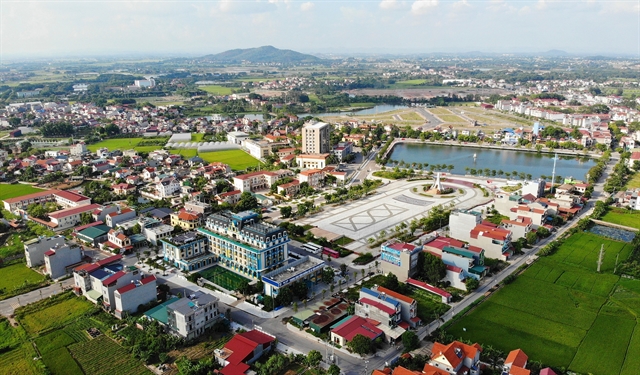 Society
Society


|
| Bích Động township of Việt Yên District, Bắc Giang Province. — VNA/VNS Photo Danh Lam |
BẮC GIANG — The northern mountainous province of Bắc Giang is focusing on addressing existing limitations and preparing for the continued rearrangement of administrative units in the next phase, according to the provincial internal affairs department.
Bắc Giang has been strictly carrying out the review, evaluation, and classification of officials and public servants in agencies and units where the number of officials and public servants exceeds the allocated number of positions, in order to arrange and assign specific, clear, and appropriate tasks in accordance with standards, titles, and job requirements.
The province promotes the role of the leader of localities in the administrative units subjected to rearrangement, as well as proactive coordination with relevant local agencies and organisations in building detailed plans and preparations for each type and group of tasks related to the implementation of administrative unit rearrangement.
Special attention is given to the arrangement and assignment plan for 'surplus' officials and public servants, the plan for arranging for working offices and public assets, and the plan to ensure security and defence, as well as to maintain the stability of people's lives in the administrative units undergoing rearrangement.
Bắc Giang Province focuses on effectively raising awareness and creating consensus, making efforts to earn high degree of support from officials, party members, and local residents during the process of rearranging administrative units.
The province has been concerned with accelerating the progress and efficiency of the rearrangement of administrative units under its jurisdiction.
Prior to 2020, the province had a total of 230 communes, wards, and towns, with 9 districts and one city, including 6 mountainous districts and one highland district, with 188 mountainous communes and towns. Currently, the province has 73 communes and towns.
Previously, the four districts of Hiệp Hòa, Tân Yên, Việt Yên, and Yên Dũng had communes belonging to ethnic minority and mountainous areas, but it's now no longer the case.
The rearrangement of district-level and commune-level administrative units in Bắc Giang Province has contributed to efforts in streamlining the organizational apparatus of agencies and organisations within its political system (down by 115 communes), streamlining the workforce (reducing 510 people at the commune level agencies), reducing state budget expenditures, restructuring and improving the quality and responsibilities of the officials, public servants, and employees in accordance with the set objectives and requirements.
At the same time, this rearrangement contributes to expanding the development space, concentrating resources, and promoting the existing potentials and advantages of localities for sustainable development. — VNS